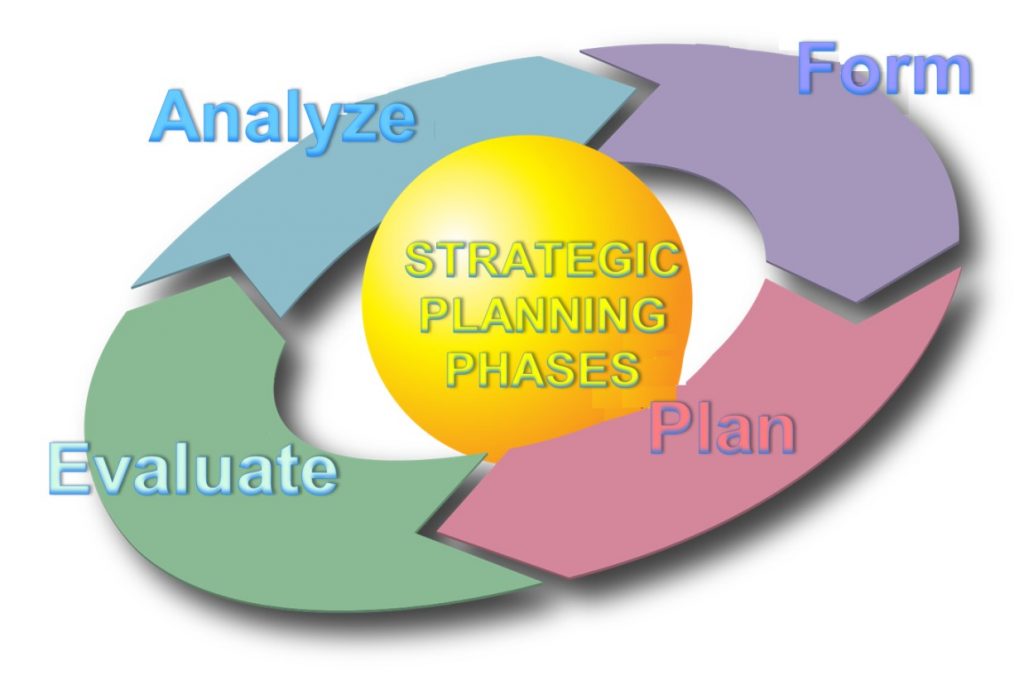Strategic planning is one of the most important factors in a project running smoothly and ending successfully. It is also sadly neglected or misused far, far too often.
What is strategic planning? Simply put, it’s exactly what it sounds like. You plan your overall medium to long term strategy for a project or business, refine it, and put it in place before you make any decisions about what to do in the day to day operations.

Generally, strategic planning falls into four phases:

-
- Analyze; you need to know where you are before you can plan where to go. Take a survey of your internal and external processes and ecosystems.
- Form your strategy; This is the top level strategy for company wide actions that need to be taken to get where you want to go. This will be supplemented by…
- Plans to execute the strategy; this is the stage where you fill in the “bones” of your strategy with real “meat” and figure out who in the company needs to be doing what to execute your planning. This is where you determine how many and what kind of new hires you need, what each division’s focus should be, and everything else that is going to need to be done in the day to day and week to week operations to execute your strategy.
- Evaluate sustainability; this stage usually comes after strategy execution has been ongoing for a while. Determine how well it’s going, and if there are places that need to be tweaked to better execute your high level strategy: Do that. “No plan survives conflict with the enemy”, as Moltke would say, and in this case your enemy is your own company.
Once wheels start rolling, snags will be hit, things may be found to work in theory but not practice, or maybe a better method is thought up by an employee. Whatever the case, always be willing to revise, revise, revise.
A short anecdote that explains why this planning is important. I have, in the past, worked for a company whose strategic planning leaves much to be desired, to put it diplomatically. The analysts acted as semi-product owners, little more than glorified go-betweens for the actual product owner that needed approval before doing anything.
They did not analyze.
Additionally, whatever strategy was in place it was clearly not planned how to execute it. The analysts were wrongly allocated, as previously mentioned, but so were most of the other personnel. Developers ended up with very little to do (some having as few as two user stories per sprint to do, most of which took mere hours to complete). Despite this, more developers were to be hired even though the work was spread thin enough as it is.
There were other factors, but the end result is this: A failed project. Constantly behind schedule because the workflow was a trickle, and user stories were not properly gathered by those whose job it was to do so. Deadlines passed, little was done, and eventually the team started hemorrhaging talent that wished to go somewhere their talents would be put to use.
Strategic planning is not a luxury; it is a necessity. A situation like that should never happen if proper consideration is given to a strategic plan. Allocate your resources properly, give everyone something to do, hire the right people for the right jobs…and things go well. Skip eve one of these steps, and the cracks start to show.
